Potrebujeme váš súhlas na využitie jednotlivých dát, aby sa vám okrem iného mohli ukazovať informácie týkajúce sa vašich záujmov. Súhlas udelíte kliknutím na tlačidlo „OK“.
ASTM F1819-07(2013)
Standard Test Method for Resistance of Materials Used in Protective Clothing to Penetration by Synthetic Blood Using a Mechanical Pressure Technique
Automaticky preložený názov:
Štandardná skúšobná metóda pre odolnosť proti materiálov používaných v ochranný odev proti prieniku syntetickej krvi pomocou mechanického tlaku Technika
NORMA vydaná dňa 1.1.2013
Informácie o norme:
Označenie normy: ASTM F1819-07(2013)
Poznámka: NEPLATNÁ
Dátum vydania normy: 1.1.2013
Kód tovaru: NS-51698
Počet strán: 8
Približná hmotnosť: 24 g (0.05 libier)
Krajina: Americká technická norma
Kategória: Technické normy ASTM
Kategórie - podobné normy:
Anotácia textu normy ASTM F1819-07(2013) :
Keywords:
blood, blood-borne pathogens, body fluids, mechanical pressure, penetration, protective clothing, synthetic blood, ICS Number Code 11.140 (Hospital equipment), 13.340.10 (Protective clothing)
Doplňujúce informácie
| Significance and Use | ||||||||||||||||||||||||||
|
5.1 This test method was modeled after a procedure commonly known as the Elbow Lean Test.5.2 This test method is intended to simulate actual use conditions wherein areas of the health care worker's protective clothing are soaked with blood and compressed between the patient's body and that of the health care worker, or similarly between the health care worker and instruments. In both cases, unconfined blood can move away from the pressure point taking the path of least resistance rather than being contained as in Test Methods F1670 and F1671. 5.3 This test method uses predominately mechanical pressure as opposed to contained, hydrostatic pressure to demonstrate liquid penetration resistance 5.4 Because this test method provides quantitative results, it is useful for discriminating differences in the liquid barrier performance of protective clothing materials. This test method can be used for measuring differences in the penetration pressure for protective clothing materials which do not pass Test Method F1670. 5.5 This test method is normally used to evaluate specimens from individual finished items of protective clothing and individual samples of materials that are candidates for items of protective clothing. 5.5.1 Finished items of protective clothing include gloves, arm shields, aprons, gowns, hoods, and boots. 5.5.2 The phrase specimens from finished items encompasses seamed and other discontinuous regions as well as the usual continuous regions of protective clothing items. 5.6 Medical protective clothing materials are intended to be a barrier to blood, body fluids, and other potentially infectious materials. Many factors can affect the wetting and penetration characteristics of body fluids, such as surface tension, viscosity, and polarity of the fluid, as well as the structure and relative hydrophilicity or hydrophobicity of the materials. The synthetic blood solution may exhibit different wetting behavior on fabrics or films with identical structures but different chemical compositions. The surface tension range for blood and body fluids (excluding saliva) is approximately 0.042 to 0.060 N/m 5.7 The synthetic blood mixture is prepared with a red dye to aid in visual detection and a thickening agent to simulate the flow characteristics of blood. The synthetic blood may not duplicate the polarity, and thus wetting behavior and subsequent penetration, of real blood and other body fluids through protective clothing materials. 5.8 It is known that body fluids penetrating protective clothing materials are likely to carry microbiological contaminants; however, visual detection methods are not sensitive enough to detect minute amounts of liquid containing microorganisms 5.9 Part of the protocol for exposing the protective clothing material specimens to synthetic blood involves applying mechanical pressure up to 345 kPa (50 psig). This mechanical pressure has been documented to discriminate protective clothing material performance and correlate with visual penetration results that are obtained with one type of human factors validation, the Elbow Lean Test.1 The Elbow Lean Test does not simulate all of the possible types of clinical exposure as there is one contact with liquid under high mechanical pressure for a short duration. Some studies suggest that mechanical pressures exceeding 345 kPa (50 psig) can occur during clinical use 5.10 Testing prior to degradation by physical, chemical, and thermal stresses which could negatively impact the performance of the protective barrier, could lead to a false sense of security. Consider tests which assess the impact of storage conditions and shelf life for disposable products, and the effects of laundering and sterilization for reusable products. The integrity of the protective clothing can also be compromised during use by such effects as flexing and abrasion (10) . It is also possible that prewetting by contaminants such as alcohol and perspiration can compromise the integrity of the protective clothing. Furthermore, high relative humidity may also affect the resistance of materials used in protective clothing to penetration by blood and other body fluids. If these conditions are of concern, evaluate the performance of protective clothing for synthetic blood penetration following an appropriate pretreatment technique representative of the expected conditions of use. 5.11 This test method involves a quantitative determination of a protective clothing penetration resistance to synthetic blood under specific test conditions. It can also be used as a qualitative method for comparing the penetration resistance characteristics of similar materials and as a material quality control or assurance procedure. 5.12 If this test method is used for quality control, perform proper statistical design and analysis of larger data sets where more than three specimens are tested. This type of analysis includes, but is not limited to, reporting the number of individual specimens tested and the average penetration pressure of specimens with a standard deviation. Data reported in this way helps establish confidence limits concerning product performance. Examples of acceptable sampling plans are found in references such as MIL-STD-105, ANSI/ASQC Z1.4, and ISO 2859–1. 5.13 In the case of a dispute arising from differences in reported results when using this test method for acceptance testing of commercial shipments, the purchaser and the supplier should conduct comparative tests to determine if there is a statistical bias between their laboratories. Competent statistical assistance is recommended for investigation of bias. As a minimum, the two parties should take a group of test specimens which are as homogeneous as possible and which are from a lot of the product of the type in question. The test specimens should then be randomly assigned in equal numbers to each laboratory for testing. The average results from the two laboratories should be compared using a non-parametric test for unpaired data and an acceptable probability level chosen by the two parties before testing is begun. If a bias is found, either its cause must be found and corrected or the purchaser and the supplier must agree to interpret future test results with consideration to the known bias. |
||||||||||||||||||||||||||
| 1. Scope | ||||||||||||||||||||||||||
|
1.1 This test method is used to evaluate the resistance of materials used in protective clothing to synthetic blood under the conditions of liquid contact and increasing direct mechanical pressure. The penetration resistance of protective clothing is based on visual detection of synthetic blood penetration at a specific applied mechanical pressure. 1.2 This test method does not apply to all forms or conditions of blood-borne pathogen exposure. Users of the test method must review modes for work/clothing exposure and assess the appropriateness of this test method for their specific application. 1.3 This test method addresses only the performance of materials or certain material constructions (for example, seams) used in protective clothing. This test method does not address the design, overall construction, components, or interfaces of garments, or other factors which may affect the overall protection offered by the protective clothing. 1.4 The values in SI units or in other units shall be regarded separately as standard. The values stated in each system must be used independently of the other, without combining values in any way. 1.5 This standard does not purport to address all of the safety concerns, if any, associated with its use. It is the responsibility of the user of this standard to establish appropriate safety and health practices and determine the applicability of regulatory limitations prior to use. |
||||||||||||||||||||||||||
| 2. Referenced Documents | ||||||||||||||||||||||||||
|
Podobné normy:
Historická
1.7.2013
Historická
1.1.2014
Historická
1.7.2012
Historická
1.2.2014
Historická
1.5.2012
Historická
1.2.2014
Odporúčame:
Aktualizácia technických noriem
Chcete mať istotu, že používate len platné technické normy?
Ponúkame Vám riešenie, ktoré Vám zaistí mesačný prehľad o aktuálnosti noriem, ktoré používate.
Chcete vedieť viac informácií ? Pozrite sa na túto stránku.


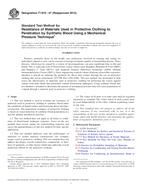
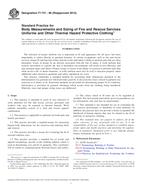 ASTM F1731-96(2013)..
ASTM F1731-96(2013)..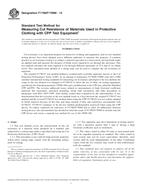 ASTM F1790/F1790M-14..
ASTM F1790/F1790M-14..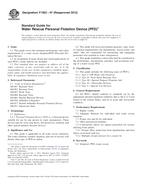 ASTM F1823-97(2012)..
ASTM F1823-97(2012)..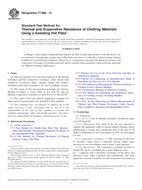 ASTM F1868-14
ASTM F1868-14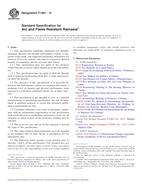 ASTM F1891-12
ASTM F1891-12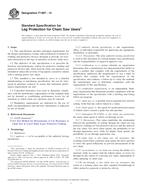 ASTM F1897-14
ASTM F1897-14
 Cookies
Cookies
